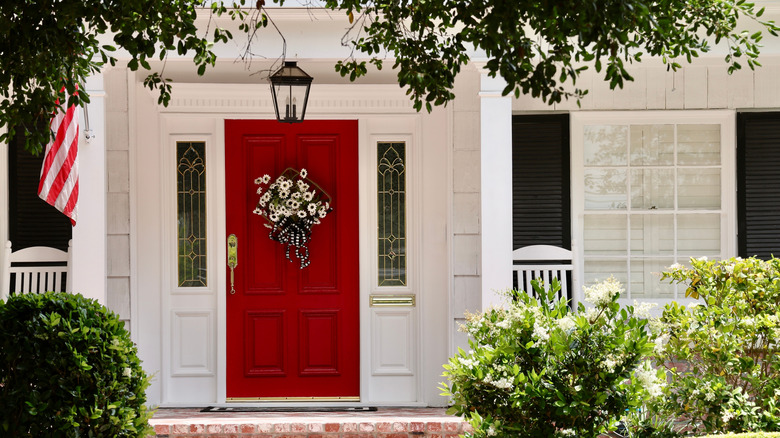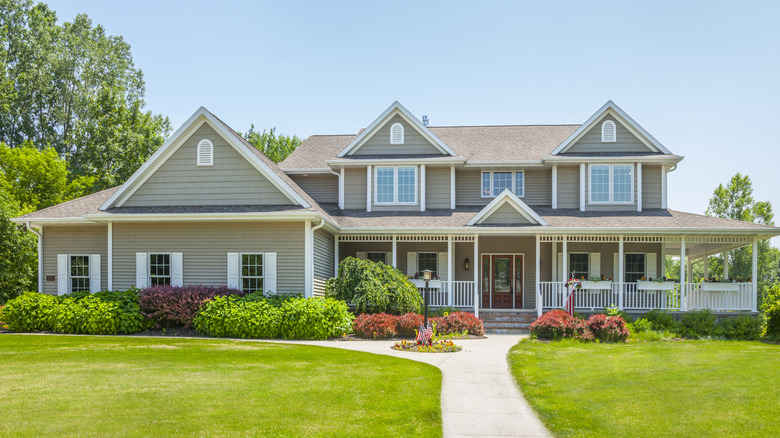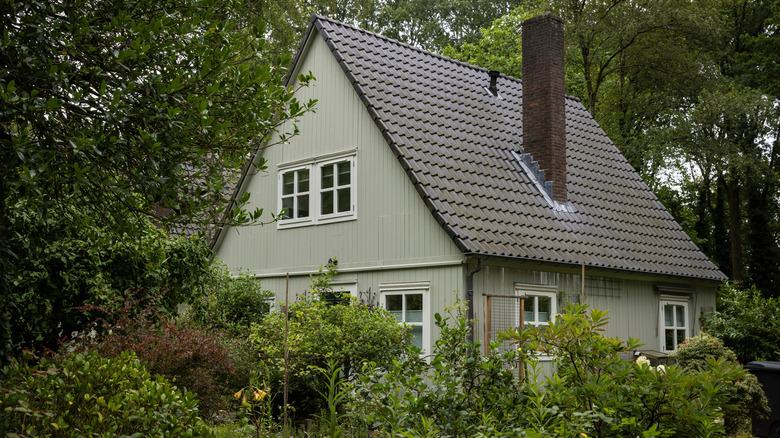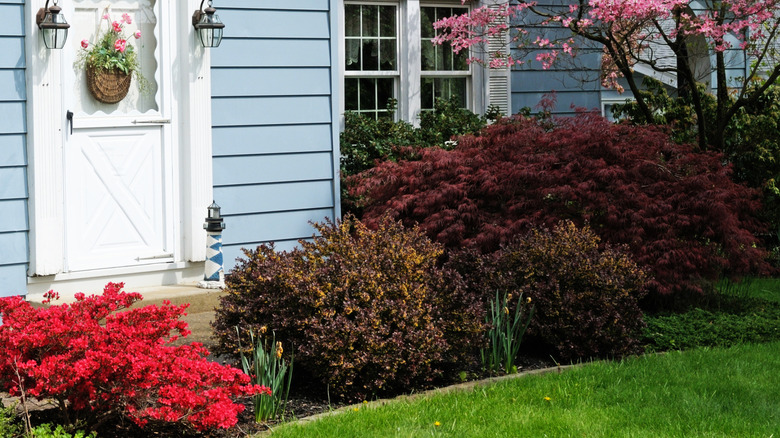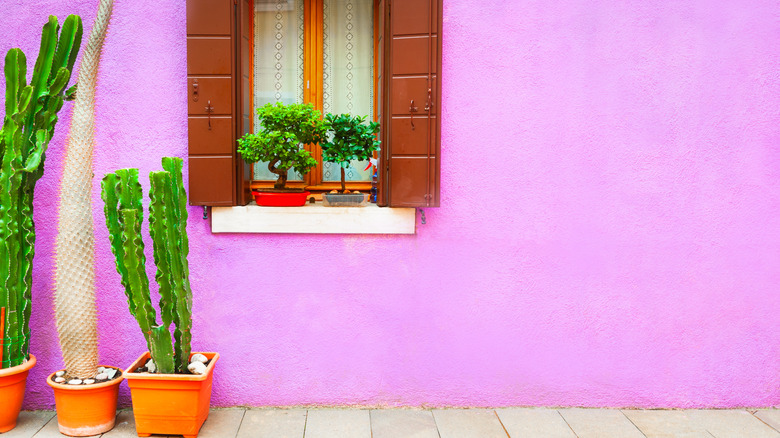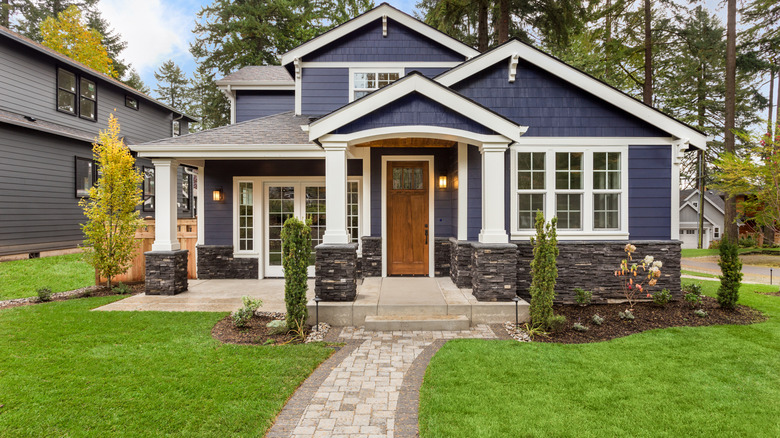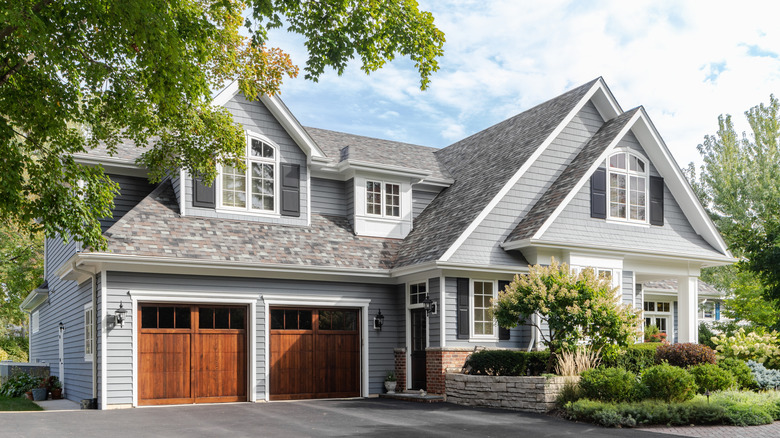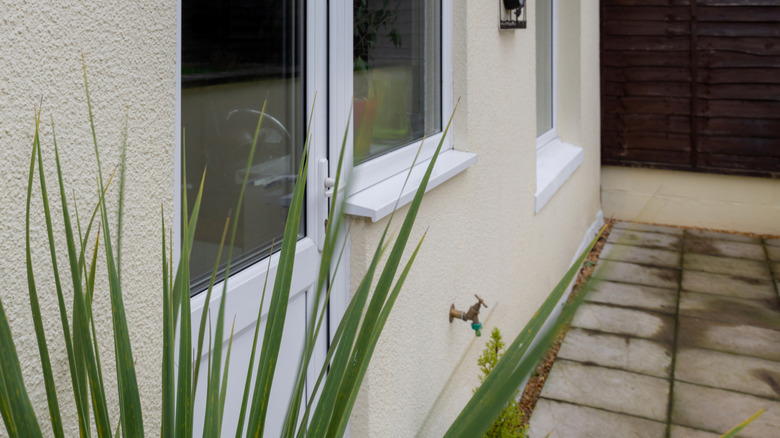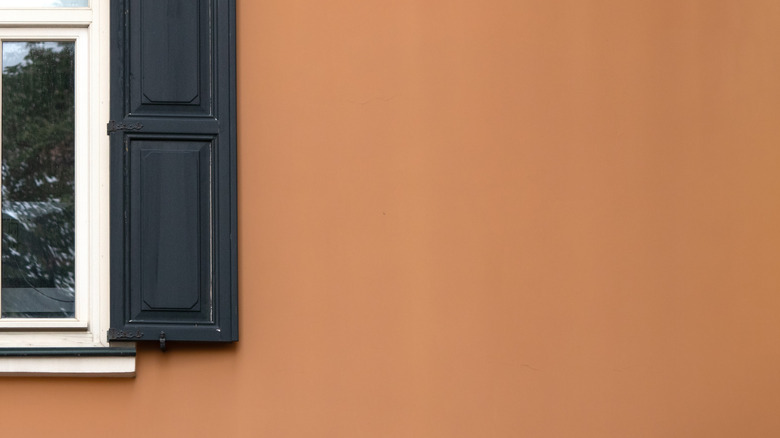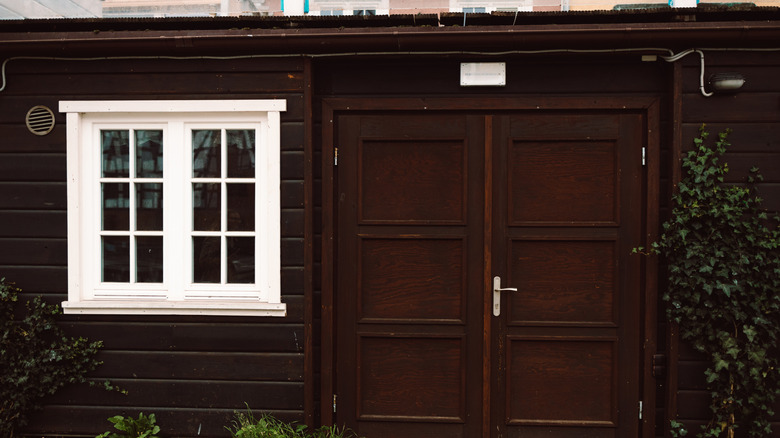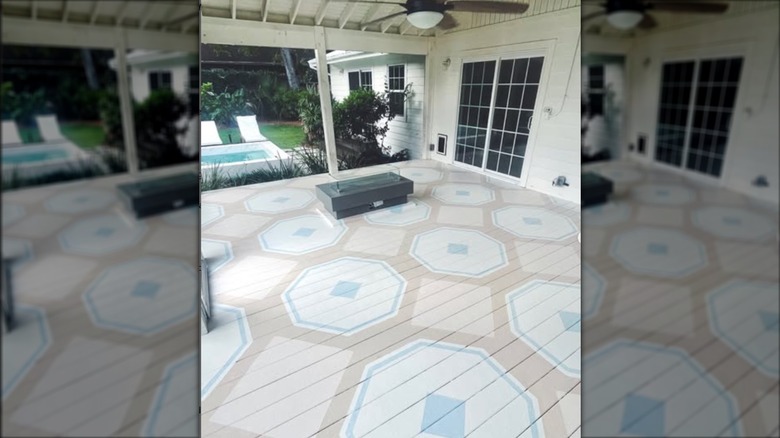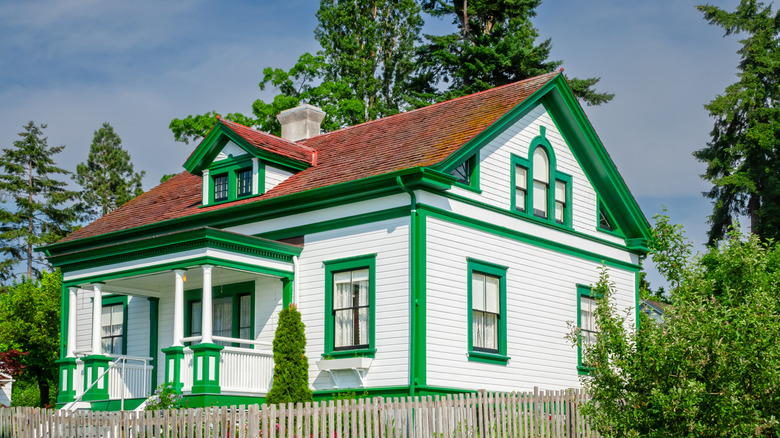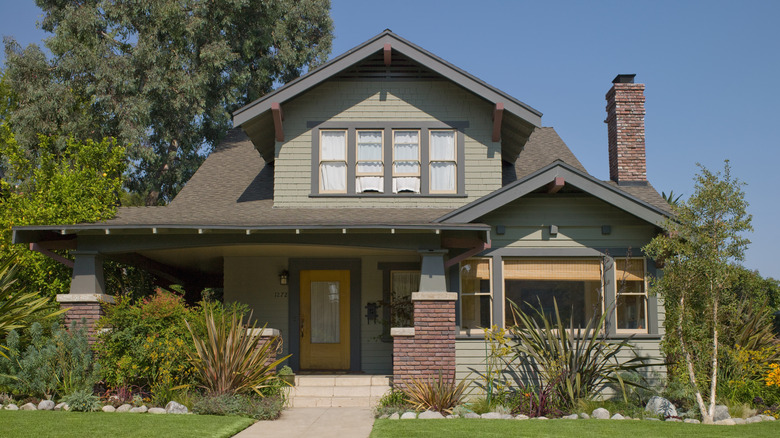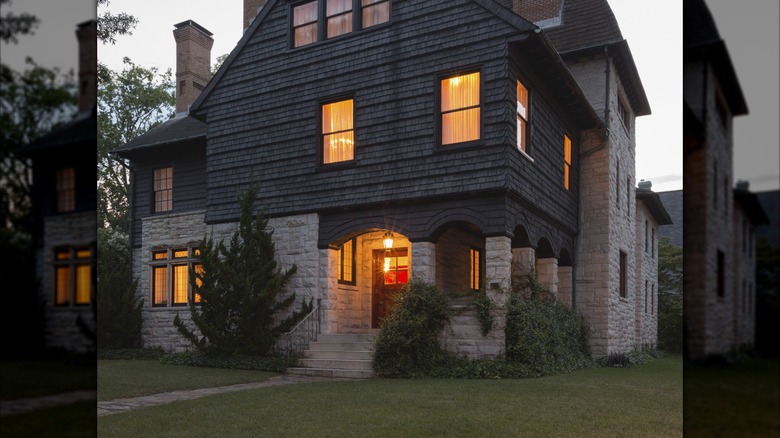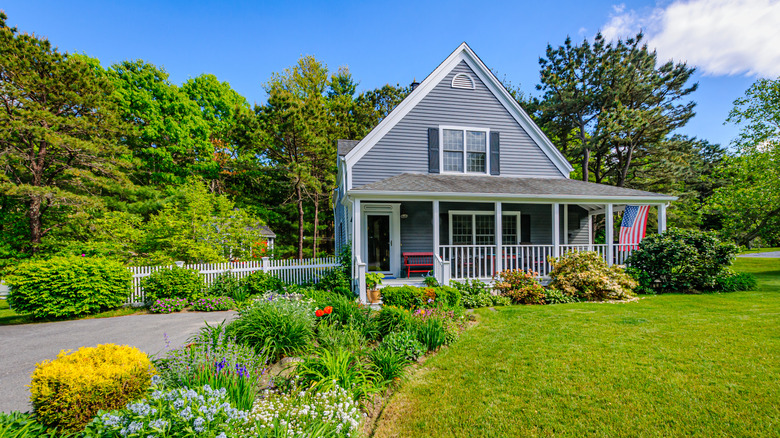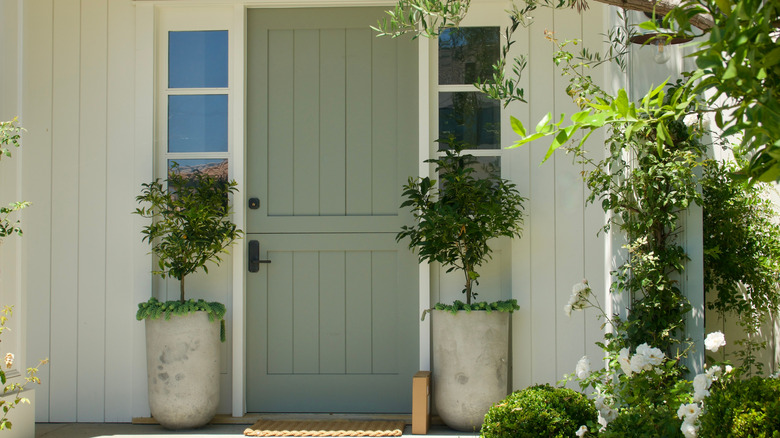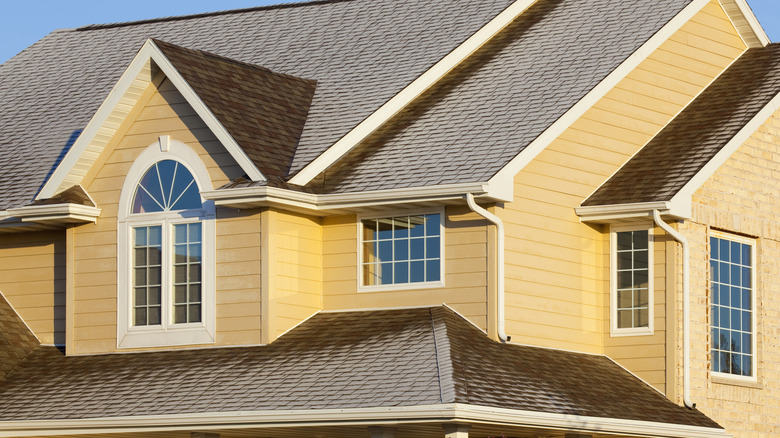17 Exterior Paint Color Trends That Are Giving Dated Homes A Modern Revival
While trends in exterior paint shades come and go, a number of classic combos have endless endurance, like the all-white home combined with black trim. Over the past couple of decades, various shades of cream, beige, tan, and cocoa brown have been very popular. Since the shade of paint on your home may indicate whichever popular option was trending at the time it was last painted, you may be looking for a way to refresh the outside of your home or make minor modifications to your paint scheme. There are actually a number of great color combinations to update an outdated exterior, as well as ingenious ways to use exterior accent colors on things like porches, doors, and windows that instantly bring your home into the modern age.
The right exterior color can make your home look more inviting and boost your curb appeal. Since paint offers a dramatic change with few supplies, these colors and ideas are a great way to transform your home's curb appeal for a relatively low cost compared to other renovations. They can involve sweeping color changes as well as small modifications, like painting your front door a fresh, new shade or adding a bright pattern to the floor of your porch.
A colorful front door
The front door is an excellent place to add a pop of surprising color, even if the rest of your home is painted a subdued, neutral color. A house exterior in a classic gray or white can be given a huge boost by a bright red or sunny yellow door, while earth tones can be elevated by adding a dash of blue or green on the front door to draw the eye in. Other fun combinations include a dark green exterior with a plum or lilac door or a brown home with a burnt orange door.
Earth tones
Earth tones have long been popular for exterior paint, encompassing a range of colors from deeper browns and caramels to tan and beige. While these can be in danger of giving off too much of a monochrome effect, remedy a dated 1990s/2000s look by adding more high-contrast trim and shutters in a crisp white. Or opt for a sophisticated matte black accent color for an instantly updated style.
Blend with the landscape
When choosing exterior paint, one great way to decide on a shade is to study the surrounding landscape for clues. A woodland cottage would look stunning in a pale or deep green that blends in with the tree cover and other surrounding foliage. A weathered bluish-gray is perfect for a beach cottage, while a sunset-hued exterior would fit perfectly in a desert landscape.
Pretty pastels
While pastel home shades may bring to mind richly-colored Queen Anne's of San Francisco or candy-colored townhouses in a beachfront town, pastels are a great option for your exterior paint, no matter where you live. Soft blues have reigned for decades as a popular home color and can be paired with crisp white trim for a cottage look. Other beautiful shades include dusty pinks and lavenders, as well as soft celery green and pale peach.
Bright shades in select areas
A great strategy, especially if you live in a warmer climate where outdoor living is a year-round possibility, is to use bold and surprising pops of color in unexpected places. This includes patio areas, which often provide a chance to depart from the home's larger exterior color scheme in favor of something a bit more saturated and colorful. Since most outdoor living spaces are up against the house, portion off the adjoining wall and give it a makeover with bright shades like orchid, magenta, turquoise, or cobalt blue.
Dark and dramatic
Dark exterior paint colors have been a rising trend in recent years, where they are usually combined with high-contrast white trim and other accents for a very fresh and contemporary look. Not only does it look stylish, but as a darker color, it may not need as much upkeep, cleaning, and repainting as lighter colors. Perfect dark and dramatic shades include navy and midnight blues, dark forest and olive greens, chocolate browns, and, of course, a rich and stylish matte black.
Highlight wood tones
Many homeowners are choosing wood-stained accents for their homes, so it's only natural that some of the most popular and trending home shades lend themselves well to blending with wood finishes, which are popping up everywhere from front doors and window trim to wood paneling on portions of the exterior. Some have even created the look of elegant wooden exterior doors for less with TikTok's paint hack. If you want to highlight wood tones, choose a neutral that doesn't upstage it but recedes into the background, like varying shades of gray or an inky black.
Warm white
While crisp white homes have always been a classic, today's fresher variation is warmer, creamier white. It proves less likely to show dirt and doesn't need quite as much repainting; plus, it can be combined with stark white trim for a subtle low-contrast look that is still light and bright. Options range from whites with just a hint of warmth to warm vanillas. Creamier whites can also work with multiple home aesthetics, including cottage, coastal, farmhouse, and Spanish mission-style homes.
Soft oranges
While the thought of painting your home orange may strike fear into the heart of your homeowner's association or neighbors, this exterior color trend is much more sophisticated than it sounds, tending toward softer and muted versions of this vibrant color like Sherwin Williams Spiced Cider or Subdued Sienna. These shades feel more earthy and sunset-inspired than bright and pair well with bright white, black, or gray trim and accents.
Dark brown is the new black
Deep brown home exteriors are having a moment, offering an alternative to the ubiquitous black that is equally sophisticated but a little less gothic-inspired. Create a balance of light and dark by pairing it with crisp white trim or outlining it in black. It's also a color that pairs well with similarly deeper stained wood doors for a more cohesive look.
Painted porches
A great way to introduce some pattern to your home's exterior without going all-in is to paint your porch or patio using freehand designs or stencils. Go for an all-over effect, use the pattern in select spots, like on a step, or create a permanent outdoor rug under a seating arrangement or dining table. Black and white checkerboard, herringbone, and more organic shapes can all add a lot of personality to your outdoor space at a minimal cost.
Colorful trim
If your home is white or neutral, consider using a more colorful hue for your trim and doors. This gives you a chance to experiment with bolder colors without having to go for an overall change, which is useful if you want another refresh every couple of years. Choose bright shades like green or bright blue, or, for a fun and bright cottage look, choose a bright red for your trim.
Low-contrast trim
If you use a color in the darker range, the first temptation may be to go with bright white trim. You can, however, create a more subtle and low-contrast effect by using a similar or complementary shade in the same depth of color. An olive green exterior looks nice with brown or dark gray trim, while a white house can be combined with soft gray or beige accents.
Black with natural stone
Black home exteriors have been on the rise, presenting a crisp and modern look that, with the right touches, can spin contemporary or vintage. Black also happens to look especially stunning when combined with natural materials, like brick and stone, offering a darker backdrop that draws attention to the lightness and texture of the stone. For a more modern and contemporary home, opt for all-over black with the stone, or add touches of white trim for a more cottage or farmhouse aesthetic.
Shades of gray
While gray has long been a classic home shade for exteriors, the options for finding the perfect gray paint have grown exponentially. This includes everything from soft and pale grays that almost look white to deeper charcoal and gunmetal grays. Gray looks especially beautiful when layered together, like a medium gray with graphite gray shutters or trim. If you have a home cursed with the ubiquitous "greige" shades popular in the past 20 years, a cooler shade of gray paint can instantly make your home's exterior feel modern and sophisticated without a drastic color change.
Fresh sage green
Sage green, sometimes considered one of the new neutrals among designers, can be a perfect color for use all over the outside of your house or for pairing with other traditional neutrals like white, cream, gray, and beige. The range of sage shades is large, with deeper, darker, and more gray-infused shades to soft, barely-there, light sage greens that look white at first glance. Great combos include a cream exterior with a sage door and trim or a deeper sage exterior with soft white trim.
Cheerful colors
Cheerful colors are the perfect way to stand out from your neighbors and feel a mood boost whenever you look at your home's exterior. Yellow paint is making a major comeback, but other fun shades include brighter, high-intensity pastels like saturated aqua or mint green. Use the color all over your exterior or as a contrasting trim or door color. These colors look particularly lovely on cottage-style homes. If you love the idea of a cheery yellow house but don't want the color to get too saturated, try Benjamin Moore's Barley or Behr's Moonlit Yellow.

